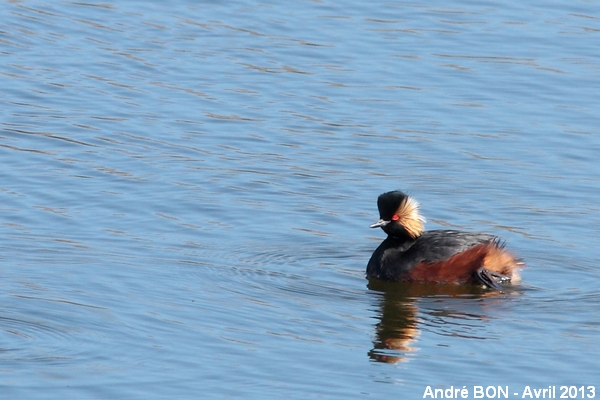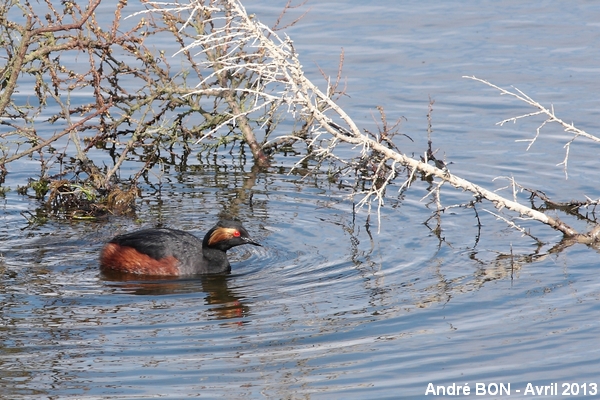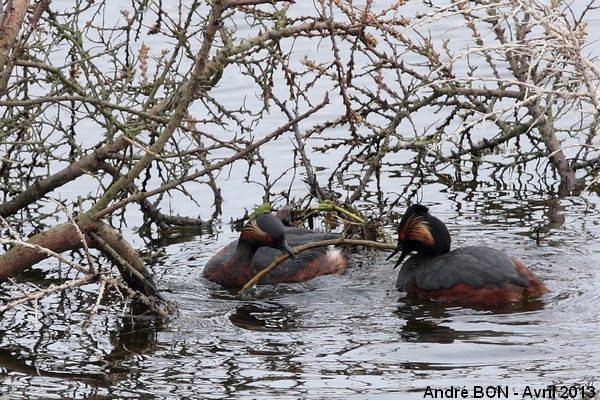


| Black-necked Grebe (Podiceps nigricollis (C.L. Brehm, 1831)) |



|
|
Scientific name: Podiceps nigricollis (C.L. Brehm, 1831) Common name: Black-necked Grebe French name: Grèbe à cou noir Order: Podicipediformes Family: Podicipedidae Size: Body size: 28 to 34 cm; Weight: 250 to 400 g; Wingspan: 56 to 60 cm. Habitat: In summer, freshwater lakes with abundant riparian vegetation. In winter, lakes, estuaries and sea shores. Food: Water insects, crustaceans, tadpoles, molluscs, small fishes, often caught and swallowed while diving under water. Nesting: The nest is a floating heap made of plant debris. There are one or two broods per year of 3 or 4 eggs between March and August. The chicks are transported on the back of their parents during the first weeks. Migration: Partially migratory. Northern populations move southwards in winter, towards the Mediterranean Sea and the Black Sea in Europe, towards the Gulf of Mexico and the south-western coasts of the Pacific Ocean in North America. Geographic area: The Podiceps nigricollis californicus sub-species is observed in North America, the Podiceps nigricollis gurneyi sub-species is observed in the south of Africa and at least the Podiceps nigricollis nigricollis sub-species is observed in Europe, in Asia and in eastern Africa. |
In breeding plumage, the Black-necked Grebe has black head, neck and upper side of the body. The flanks are reddish. The eyes are red, and starting from this point, beautiful fan-shaped blond feathers extend backwards. The bill is small, thin and slightly upturned. It makes a well marked angle with the vertical forehead. In winter (or non-breeding) plumage, the dark coloured upper side of the head shows a notch extending below the eye on the whitish cheeks. There is a possible confusion with the Horned Grebe (Podiceps auritus) in winter plumage. This last one has pure white cheeks and the limit with the black cap is straight and located at the eye level. |
| [To know more about the Black-necked Grebe] [Next picture] [Top] |

|
A short visit to the Park of Marquenterre, in the Somme bay, permitted me to add some new bird species to my collection, including the Black-necked Grebe. Here is a beautiful specimen in breeding plumage. The angle between the upturned bill and the vertical forehead is clearly visible on this picture. |
| [To know more about the Black-necked Grebe] [Next picture] [Previous picture] [Top] |

|
Black-necked Grebes are beautiful birds with their fan-shaped blond feathers. |
| [To know more about the Black-necked Grebe] [Previous picture] [Top] |

|
Here are Mister and Madam starting to build their floating nest. |